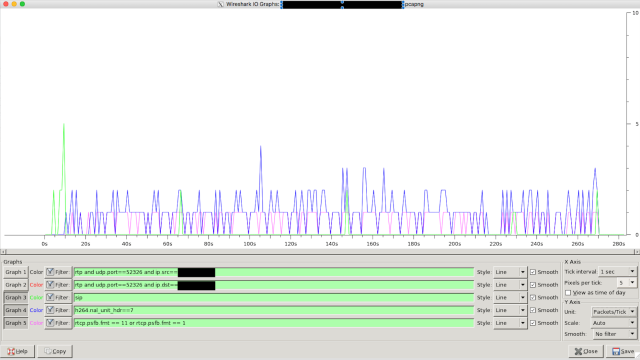

- #Wireshark filters examples sip full
- #Wireshark filters examples sip mac
- #Wireshark filters examples sip windows
The matches operator makes it possible to search for text in string fields and byte sequences using a regular expression, using Perl regular expression syntax. Match packets where SIP To-header contains the string “a1762” anywhere in the header: Match packets that contains the 3-byte sequence 0x81, 0圆0, 0x03 anywhere in the UDP header or payload: It is also possible to search for characters appearing anywhere in a field or protocol by using the matches operator. Thus you may restrict the display to only packets from a specific device manufacturer.
#Wireshark filters examples sip mac
The “slice” feature is also useful to filter on the vendor identifier part (OUI) of the MAC address, see the Ethernet page for details. (Useful for matching homegrown packet protocols.) Note that the values for the byte sequence implicitly are in hexadecimal only. Match packets containing the (arbitrary) 3-byte sequence 0x81, 0圆0, 0x03 at the beginning of the UDP payload, skipping the 8-byte UDP header.
#Wireshark filters examples sip windows
#Wireshark filters examples sip full
TCP buffer full - Source is instructing Destination to stop sending data Show only traffic in the LAN (.x), between workstations and servers - no Internet: Show only SMTP (port 25) and ICMP traffic: If you need a display filter for a specific protocol, have a look for it at the ProtocolReference. The master list of display filter protocol fields can be found in the display filter reference. The basics and the syntax of the display filters are described in the User’s Guide. So now we have the MME_UE_S1AP_ID, we can filter all S1 messaging containing that MME_UE_S1AP_ID, we’ll use this Wireshark filter to get it: s1ap.MME_UE_S1AP_ID = 2īoom, there’s a all the signalling for that subscriber.Wireshark uses display filters for general packet filtering while viewing and for its ColoringRules. (It’s worth noting the MME_UE_S1AP_ID is only unique to the MME – If you’ve got multiple MMEs the same MME_UE_S1AP_ID could be assigned by each).

The MME_UE_S1AP_ID is a unique identifier, assigned by the MME to identify which signaling messages are for which subscriber. Inside the protocolIEs is the MME_UE_S1AP_ID – This unique identifier will identify all S1 signalling for a single user.

Next up let’s take a look at the contents of one of these packets, Quick note – Not all IntialUEMessages will contain the IMSI – If the subscriber has already established comms with the MME it’ll instead be using a temporary identifier – M-TMSI, unless you’ve got a way to see the M-TMSI -> IMSI mapping on the MME you’ll be out of luck. The Wireshark e212 filter filters for ITU-T E.212 payloads (ITU-T E.212 is the spec for PLMN identifiers). Luckily we can filter in Wireshark to find the IMSI we’re after e212.imsi = "001010000000001" The S1 interface only contains the IMSI in certain NAS messages, so the first step in tracing a subscriber is to find the initial attach request from that subscriber containing the IMSI. So how do we find all the packets relating to a single subscriber / IMSI amidst a sea of S1 packets? The S1 interface can be pretty noisy, which makes it hard to find the info you’re looking for.


 0 kommentar(er)
0 kommentar(er)
